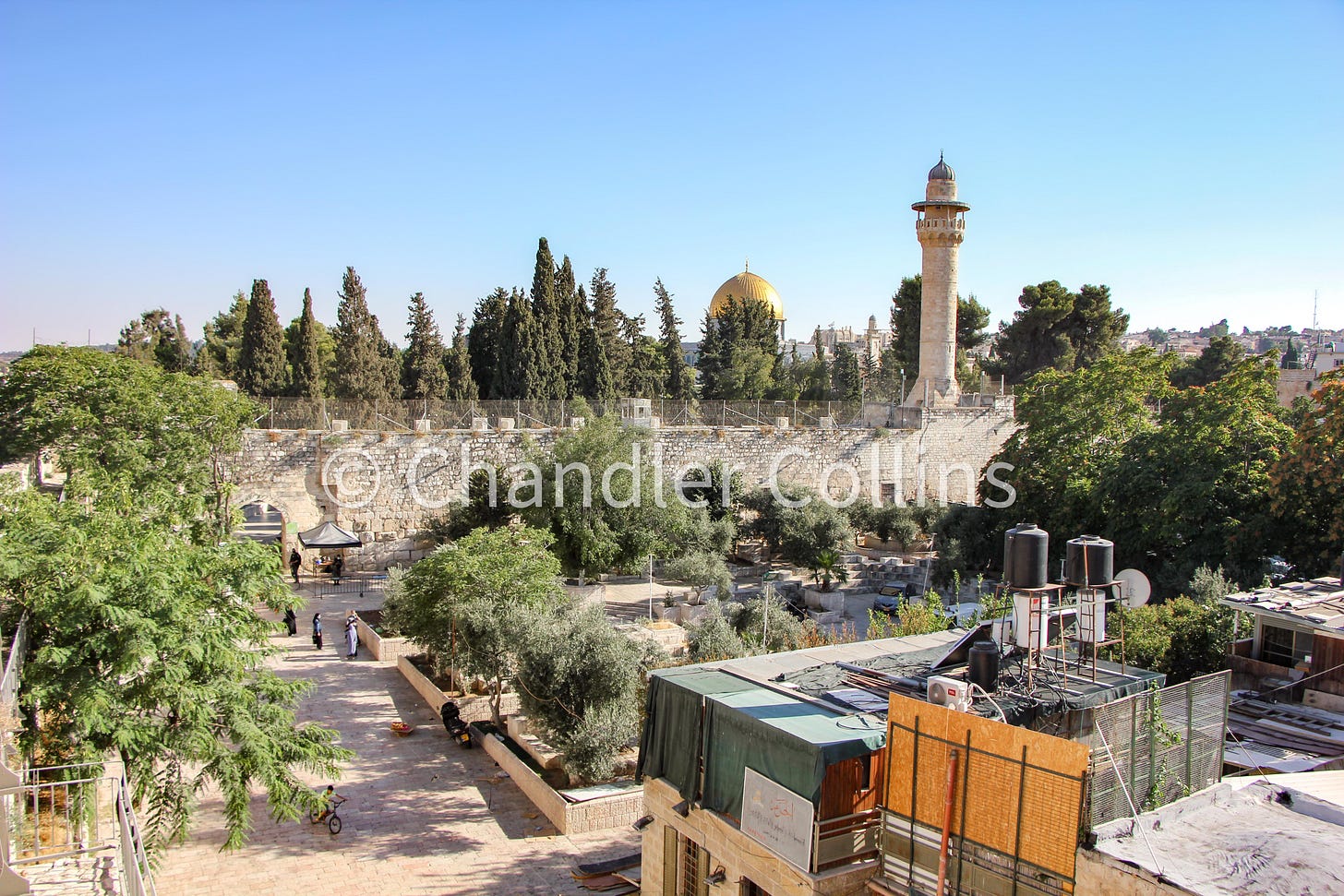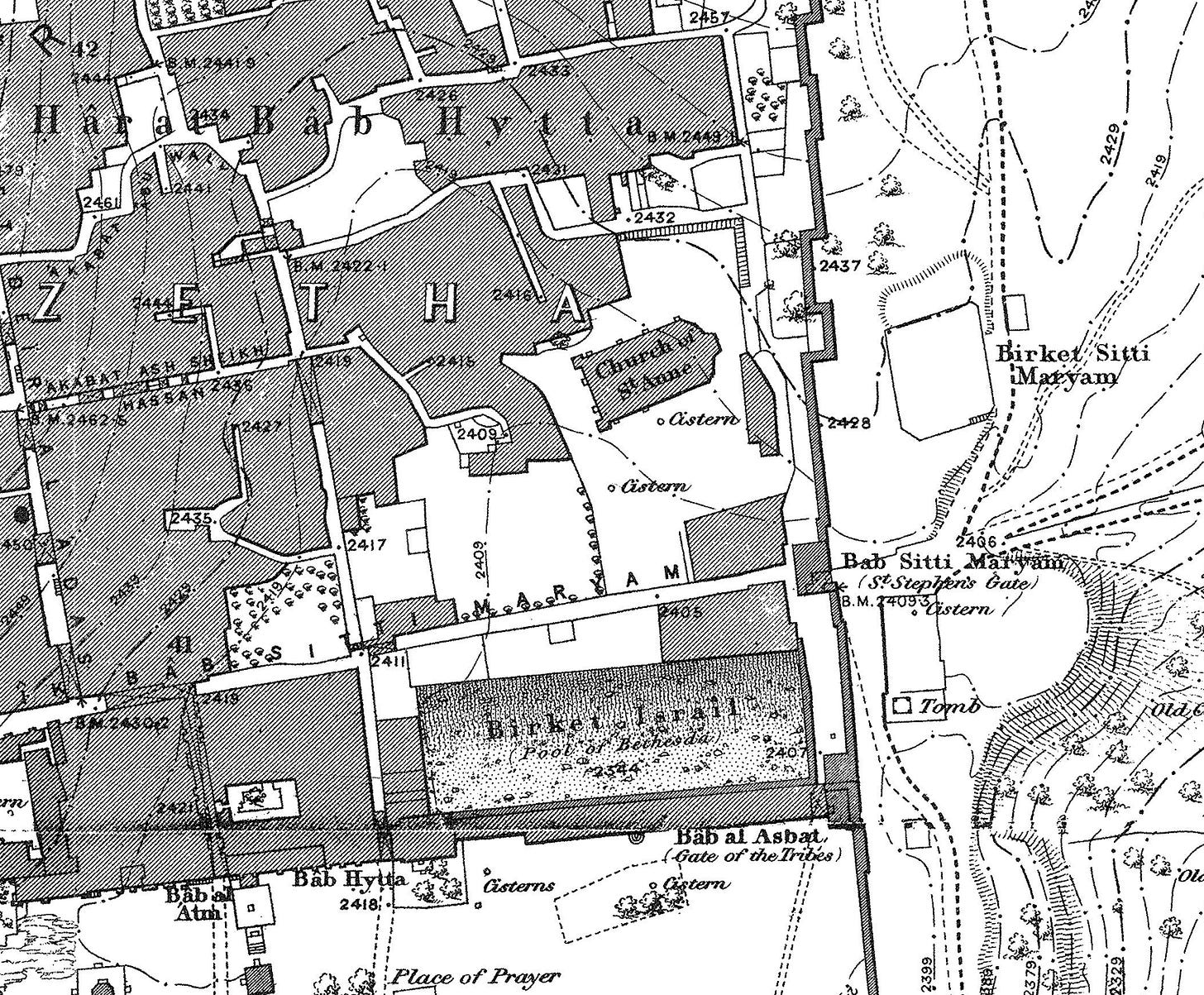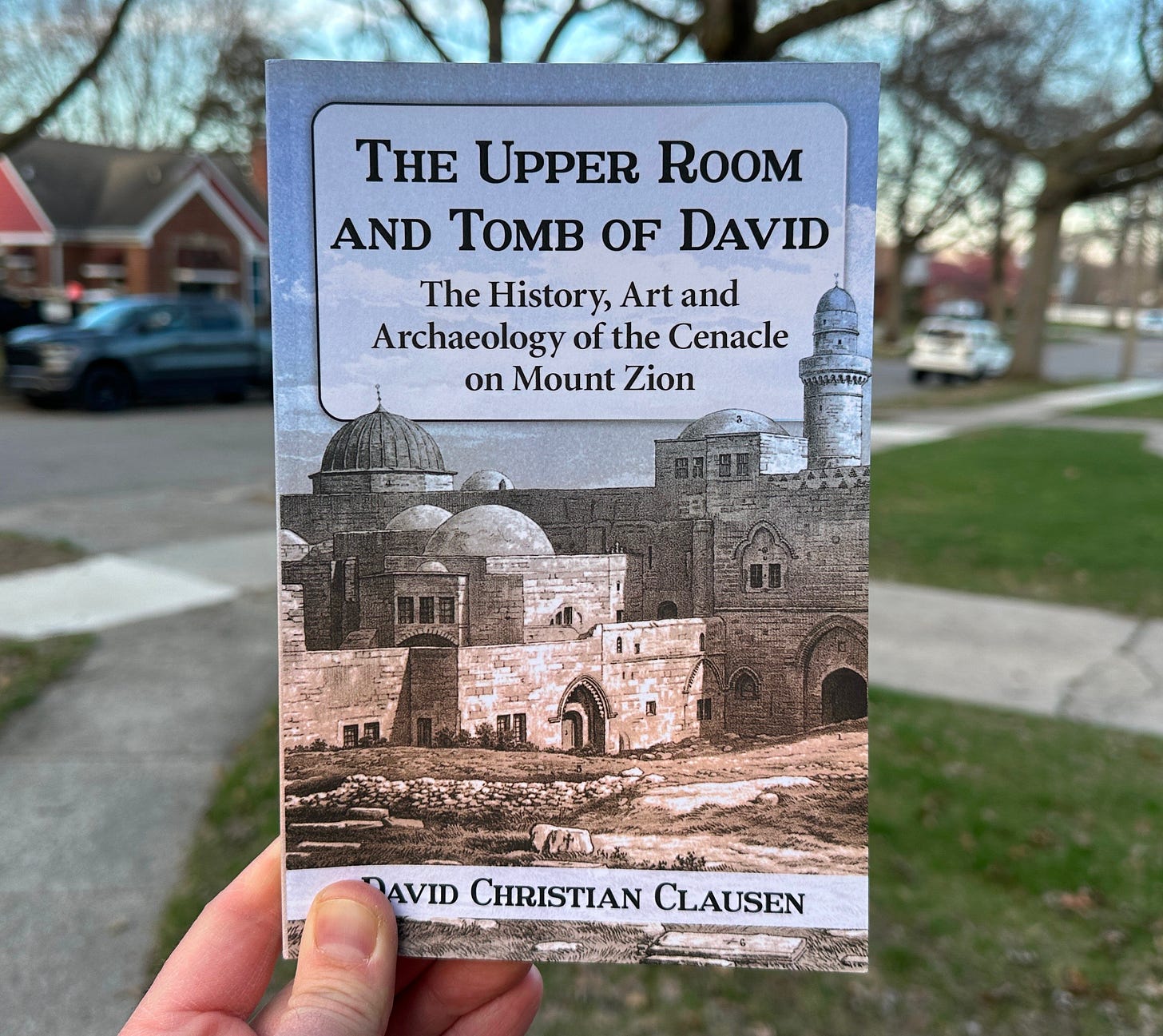Jerusalem in Brief (No. 11)
Pools once visible and now buried in northeastern Jerusalem, 19th-century hotels, and a book on the Cenacle
If you find this newsletter valuable, consider upgrading to a paid subscription and receive unique Jerusalem-related benefits.
Jerusalem visualized
This photo shows part of the model of Late Ottoman Jerusalem made by Stefan Illés looking west. Illés’s model reflects the city as it stood in the early 1870s (for another portion, see here). The eastern line of the city wall runs along the bottom third of the photo with Lions’ Gate/St. Stephen’s Gate at its center left. In the foreground, the terrain descends eastward toward the Kidron Valley (Wadi en-Nar). At the top left stands the northern end of the Noble Sanctuary. The rise of the Bab Ḥutta neighborhood can be seen on the right. This area is often equated with Josephus’s toponym “Bezetha” and marked as such on early modern maps of Jerusalem.
A number of pools and channels were developed on the northeastern part of Jerusalem from perhaps as early as the time of the Judahite Monarchy (Iron Age II) into the medieval period. Apparently these all aimed to take advantage of rain runoff in a small tributary of the Kidron Valley that is today covered by urban structures. This tributary is known by several names of modern convenience, including the Beth Zeta Valley, St. Anne’s Valley, and the Bethesda Valley (I usually refer to it by this name). It provided natural defense at the northern side of the sacred mountain prior to Herod’s northern extension of the Temple Mount platform which buried part of it. The natural protection afforded by this small valley left only a narrow saddle to its west where ancient Jerusalem remained most vulnerable to attack.
The model attests to the presence of two pools in this part of the city that have both since been filled and concealed by debris. The first sits at the center right and was known as Birkat Sitti Miryam (the Pool of St. Mary). The association with Mary joins a number of other toponyms on the east side of Jerusalem where a Byzantine Christian tradition located the place of her birth. The date of its construction is unknown, but it is not generally thought to be ancient. Birkat Sitti Miryam was visible until 1989 when it was filled in (Prag 1989:72). Today it is covered by graves of the large Muslim cemetery outside the eastern Old City wall. A photo from 1854 shows the southern part of this pool.

The second pool, known as Birkat Israel (the Pool of Israel) sits inside the city wall just north of the sacred enclosure. Scholars generally agree that it is ancient, dating either to the time of King Herod or perhaps earlier to the Hellenistic Period (Gurevich 2012). Nineteenth-century photos and sketches show that it had long before fallen into disuse. It was filled in completely during the Mandate Period and is a parking lot today. During most of the 19th century, it was widely held to be the ancient Pool of Bethesda until excavations revealed large twin pools to the north on the grounds of the Church of Saint Anne. As Illés’s model shows, these excavations had not yet taken place in the 1870s.

Internet Standout
For a while now, I have wanted to purchase a new copy of Tourists, Travellers and Hotels in 19th-Century Jerusalem: On Mark Twain and Charles Warren at the Mediterranean Hotel by Shimon Gibson, Yoni Shapira, and Rupert L. Chapman III. The book highlights the infrastructure developed for tourism and pilgrimage in Late Ottoman Jerusalem. It includes much important information on hotels in the city, as well as an appendix on old guidebooks.
This work stands in a category that I refer to as the “ghost books” on Jerusalem. Barring access to a good library, you will probably never see them. If you can find a copy for purchase, their scarcity will cost you. Many older books fall into this category, but Tourists, Travellers and Hotels, published only in 2013, is surprisingly already out of print.
A preview is available on Google Books, but users can only access 25 total pages. One ambitious Amazon seller listed a copy for just shy of $3,000. After scouring the internet, I have found only three used copies available (for the price of new ones). If I am wrong about this, feel free to let me know in the comments. Maybe someday another printing will render the book more easily available. Until then, the difficulty of acquiring this work (and many others) illustrates part of what makes the study of Jerusalem so challenging.
Recent arrivals
A few weeks ago I was delighted to receive a copy of David Christian Clausen’s 2016 book The Upper Room and Tomb of David: The History, Art and Archaeology of the Cenacle on Mount Zion. Perhaps you have visited the Cenacle on modern Mount Zion, which is the Upper Room of the gospels according to western Christian tradition. The building is a fascinating one with roots dating back two millennia. Aspects of its current architecture also reflect the three monotheistic religions whose communities have each venerated the building.
Clausen’s book is broken into three parts focused on the (1) the history of the building from the Roman Period to modern times, (2) the history of archaeological work in the building, and (3) its original function. Part three explores whether the Cenacle building was constructed as a Jewish synagogue, pagan mithraeum, or Christian church. Clausen brings much disparate information about the Cenacle together in one place and discusses it in accessible language. It is an invaluable resource on a fascinating building.
Paid Supporters
The most recent livestream for paid supporters took place a few weeks ago. We discussed part of my dissertation research focused on the date of Jerusalem’s first settlement on the Western Hill during the time of the Judahite Monarchy (Iron Age II). This is a presently debated topic with scholars holding views of the settlement’s beginning date that are as wide as a century apart.
The next event is scheduled for June 10 from 8:00-9:30pm ET. Paid supporters will receive a private link beforehand.
During the events, I discuss excavations, publications, pop media articles, and developments relevant to historical Jerusalem. I also share resources and occasionally present original research. Participants have the opportunity to ask questions. Paid subscribers also get access to the archive of previous livestreams.
Enjoy this post?
Show your appreciation by leaving a tip as low as the price of a cup of coffee. Less than 1% of readers do this, and it makes an enormous difference.
Follow Approaching Jerusalem
View the newsletter archive and follow Approaching Jerusalem on social media for archaeological stories, upcoming lectures, and other Jerusalem-related news, resources, and analysis.



